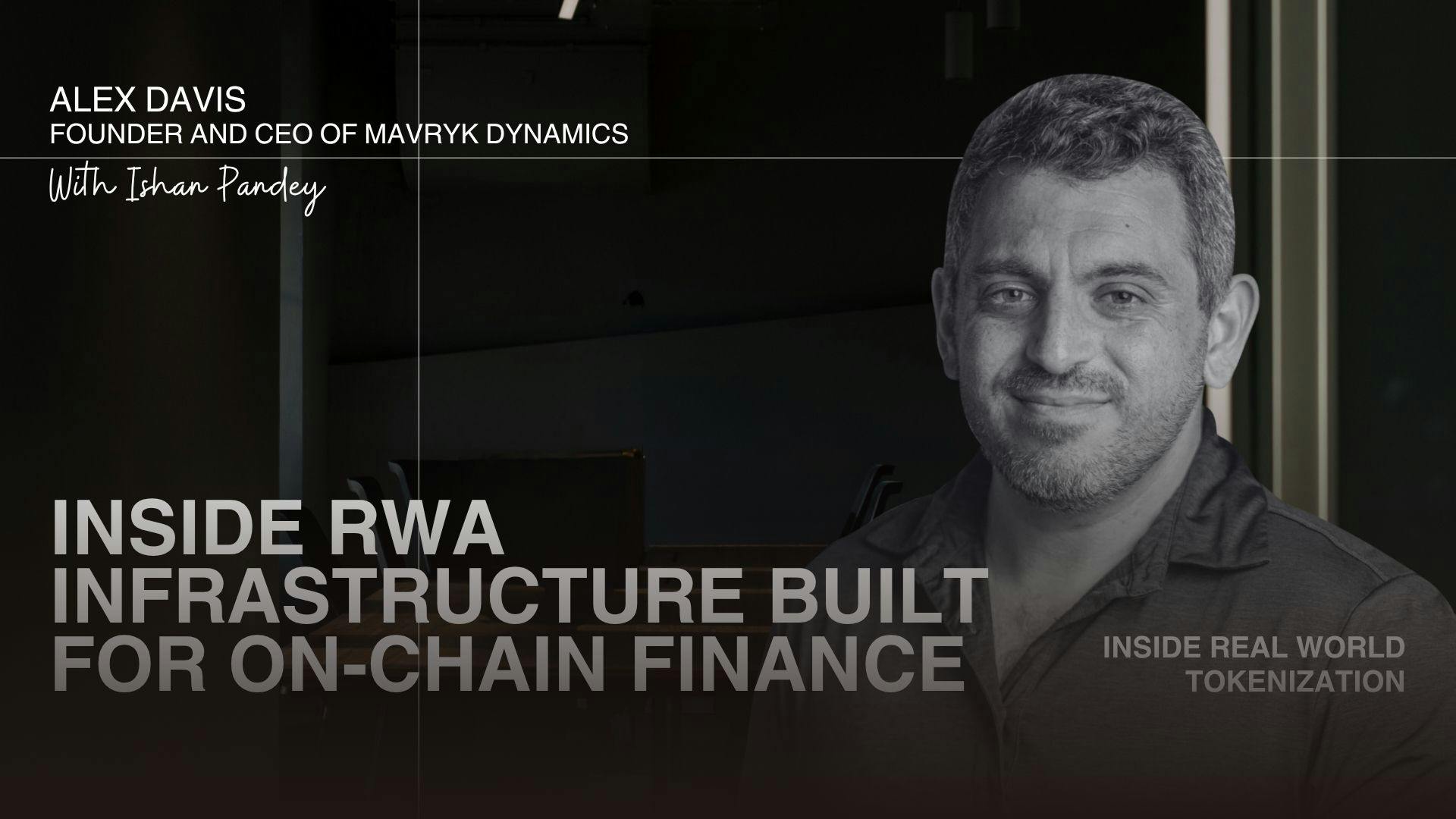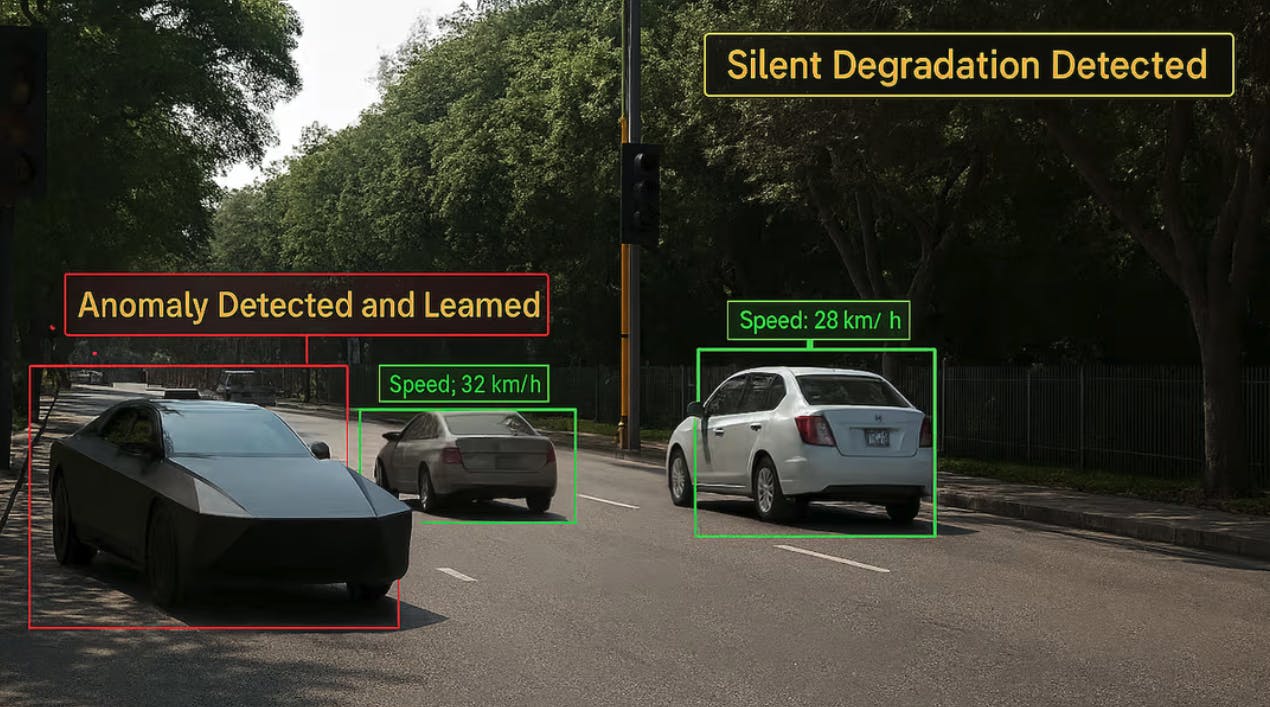Real World Asset (RWA) tokenization is no longer a concept reserved for whitepapers. As traditional financial institutions look to digitize ownership, blockchain projects are racing to provide the infrastructure for global, interoperable markets. One such project is Mavryk Network, a Layer 1 blockchain built from the ground up to integrate tokenized RWAs with lending, compliance, and market infrastructure.
In this edition of HackerNoon’s Behind the Startup, Ishan Pandey sits down with Alex Davis, founder and CEO of Mavryk Dynamics, to unpack his journey from Tezos to Mavryk, and explore the vision, infrastructure, and regulation powering their RWA-focused blockchain.
Ishan Pandey: Hi Alex, it’s a pleasure to welcome you to our “Behind the Startup” series. Please tell us about yourself and what inspired you to build Mavryk Network.
Alex Davis: Thanks for having us on the Behind the Startup series, Ishan. I’d love to dive into who we are and what we’re building.
I’m Alex Davis, former Chief Innovation Officer for Tezos MENA. My background and interests have always centered around the intersection of libertarian ideals, geopolitics & defense, fintech, and finance.
Early on, I founded the first VC-backed DeFi application, Maven Finance, on the Tezos blockchain and co-founded Blockchain Alpha—a fund backed by a real estate billionaire. Through that fund, we built a portfolio of hotel assets that we aimed to tokenize and support via Maven Finance. My vision was to create the first DeFi platform on Tezos operating as a lending bank, utilizing security token offerings (STOs), now RWAs, as collateral.
As our deal flow grew and the STO sector stagnated, we realized that everyone in the industry was building in silos. There was a need for a blockchain that actively supported DeFi and seamlessly integrated real-world assets to operate in a crypto-based environment that would be the future for RWAs. Our goal was to bring these tokenized assets onto Maven, using them as collateral for loans.
During the 2022–2024 bear market, we faced a critical decision: stay on our existing blockchain and risk failure, migrate to another chain and rebuild from scratch, or expand to deliver our vision for a fully integrated RWA economy by building our own Layer 1. We chose the third path.
We decided to build Mavryk to solve the fundamental problems that hindered STOs and stunted the growth of the RWA sector. Our goal is to create a fully integrated RWA economy where we can guarantee interoperability between different secondary markets, lending, and borrowing platforms through seamless integration with data oracles – rather than building in silos.
Ishan Pandey: Your background spans government and defense, alongside significant roles in the blockchain space, including Chief Innovation Officer for Tezos Israel and Board Advisor for Blockchain Israel. How have these diverse experiences informed your unique approach to decentralized applications and real-world asset tokenization at Mavryk?
Alex Davis: My diverse background gives a strategic, macro-level perspective that’s often missing in the crypto space. It helps me spot long-term trends and understand how to deploy the right micro-level tools to reach those broader goals. It’s less about chasing short-term hype and more about positioning for where the industry is headed.
This strategic perspective is dramatically lacking in crypto, where everyone’s focused on launching tokens, cashing out, and running Ponzi schemes on repeat. Projects often build in silos: they might tokenize an asset, but they don’t consider how it fits into a broader ecosystem, like secondary markets or lending protocols. There’s little collaboration, and that limits scalability.
You can’t build in a vacuum. You need to think bigger, more strategically, and more long-term. At Mavryk, we take a different approach. We focus on long-term infrastructure, traditional markets onboarding, and strategic interoperability.
Ishan Pandey: Mavryk Network is described as a cutting-edge Layer 1 network for interoperable Real World Assets. Can you elaborate on the core technical innovations that enable this interoperability and how they address existing limitations in RWA tokenization?
Alex Davis: One of the biggest limitations in RWA tokenization today is fragmentation. As I mentioned earlier, most projects operate in silos, focusing on a single layer of the value chain, such as digitizing an asset or running a primary offering, but they often overlook the critical infrastructure needed to support liquidity, secondary markets, lending, and ongoing utility.
After tokenization, you need robust secondary markets so investors can exit when they choose. Then there’s lending and borrowing, especially important for real estate and private equity, where assets are often leveraged. These assets are yield-bearing and can service debt, but without an integrated lending infrastructure, they remain underutilized. Then comes global distribution and accessibility, and at Mavryk, this is supported by Multibank.
In essence, we’ve built a vertically integrated ecosystem inspired by Apple’s end-to-end design philosophy. At the core of this is our MRC-30 token standard, purpose-built for RWAs. This token standard accounts for the compliance requirements and everything involved with RWAs, but also plugs into the three different permissioned DEXs we’ve built for RWAs, plus the launchpad.
The RWA token is also integrable with Maven Finance, our lending arm. All assets tokenized on the MRC-30 token standard can be integrated into the smart contract vaults we have on Maven, where users can deposit multiple RWAs as collateral and borrow against the combined value of their assets.
The launchpad handles creating the token and distributing it for primary offerings to new investors. Then there’s the on-chain order book, which allows investors to place limit orders. We have an automated market maker that provides two-sided liquidity pools for instant liquidity. Finally, there’s the OTC desk, which allows large block orders to go through without disrupting the open market.
By unifying these layers, we’ve created an interoperable RWA infrastructure that goes beyond tokenization and addresses the full lifecycle of RWAs on-chain. Crucially, MultiBank is going to utilize this infrastructure for its upcoming RWA marketplace.
Ishan Pandey: Maven Finance is a fully DAO-operated cooperative banking platform, and Equiteez focuses on RWA tokenization via a REIT Fund and integrated secondary markets. What are the key business models and value propositions for users and institutions within these platforms, and how do they interact with the broader Mavryk Network?
Alex Davis: Mavryk operates with a B2B2C model. On the B2B side, through Equiteez and our partnership with Multibank, we’re focused on onboarding property developers, real estate managers, portfolio managers, and brokers, bringing their yield-bearing assets onto the platform. The REIT fund we’re structuring will acquire these assets, digitize them using Mavryk’s tech, and distribute them on-chain, creating a consistent pipeline of high-quality RWAs. This process introduces an industry-first revenue-generating model at the Layer 1 level.
On the B2C side, these tokenized assets are made available to all global investors and users, who can invest in them through the Multibank or Equiteez platforms. Once acquired, users can deposit their RWA tokens into smart contract vaults on Maven Finance to borrow against them, just like they would with traditional collateral.
For example, a user could deposit $100,000 worth of diversified RWA tokens and borrow $80,000 against them. The income generated from those assets flows into the vault and can be used to pay down the loan or reinvest.
So, we’re building a full-cycle ecosystem, onboarding institutional-grade assets on one end, and giving retail users the tools to access, invest in, and unlock liquidity from those assets on the other.
Ishan Pandey: The tokenization of real-world assets often faces significant regulatory and compliance hurdles. Given your background, how is Mavryk Network addressing these challenges, and what specific mechanisms or partnerships are in place to ensure a secure and legally compliant RWA ecosystem?
Alex Davis: Honestly, Dubai has made this far more straightforward. VARA, the Virtual Asset Regulatory Authority, recently introduced a regulatory framework for what it calls ARVA tokens, Asset Referencing Virtual Assets, which allow for the tokenization of tangible assets or fiscal contracts without classifying them as traditional securities.
This is a game-changer. It opens the door to a global investor base, including both accredited and retail participants, while still enforcing strong investor protections. As long as issuers provide a prospectus, conduct KYC, and obtain a Category 1 VARA license, they can legally issue ARVA tokens. In doing so, they’ve essentially reimagined securitization, enabling the trading and transfer of investment-grade assets without relying on outdated structures.
Ishan Pandey: You’ve been a prolific speaker at various prestigious venues globally. From a technical and adoption standpoint, what are the most common misconceptions or challenges you encounter when discussing RWA tokenization with traditional financial institutions or the general public, and how does Mavryk Network aim to demystify these?
Alex Davis: This is one of the most critical and misunderstood areas in the entire RWA space. There are major gaps on both sides—traditional businesses often don’t understand blockchain technology, and Web3 projects often lack the nuance to navigate real-world business and regulatory environments.
In traditional finance, there’s a knowledge gap around what the technology enables. Concepts like staking, wallets, or gas fees sound foreign, but when you translate them into familiar terms, it starts to click. Staking is like making a deposit. A wallet is an account. Gas fees are just transaction fees. When we explain that a token is akin to a digital version of a paper stock certificate, that’s usually the turning point. People begin to understand that this isn’t some abstract cryptocurrency; it’s a digital representation of ownership.
That distinction is key. One of the biggest misconceptions in both the crypto and traditional spaces is that you can mint an asset as an NFT and sidestep investor protections or securities laws. But technology doesn’t change the nature of the asset. A tokenized house is still a house. A financial contract is still a financial contract. Wrapping it in an NFT doesn’t exempt it from regulation. That’s why many early RWA projects failed; they overlooked this legal reality.
At Mavryk, we’ve taken a deliberate approach to compliance by partnering with Multibank, whose traditional finance expertise complements our Web3-native infrastructure. Together, we’re building a legally sound and technologically advanced ecosystem. They’re regulated in 17 jurisdictions and operate in over 150 countries, which gives us a strong regulatory foundation. While Mavryk handles the blockchain infrastructure, Multibank ensures we meet global sales and compliance standards.
Ishan Pandey: Looking ahead, what are the next major milestones for Mavryk Network, Maven Finance, and Equiteez? How do you envision the long-term impact of Mavryk’s ecosystem on the global financial landscape, particularly regarding liquidity and accessibility for traditionally illiquid assets?
Alex Davis: Our immediate focus is on three major milestones. First, bringing the Mavryk Network to the mainnet. Second, launching the Multibank RWA platform, built on Mavryk’s infrastructure and powered by Equiteez. This platform will enable the sale of tokenized real-world assets from day one, leveraging contributions from partners like MAG and others. And third, graduating Maven Finance from the beta testnet to the mainnet.
Looking ahead, the potential impact is enormous. Imagine a base of $10 billion in tokenized assets generating an average annual yield of 8%. That’s $800 million per year flowing to users in the ecosystem, distributed monthly as dividends or interest. But that value doesn’t just accumulate; it moves. It can be reinvested, used as collateral in Maven Finance to access loans, or spent on goods, services, or additional assets within the ecosystem. It becomes a self-reinforcing cycle of liquidity and utility.
When it comes to global liquidity and accessibility, Mavryk enables borderless ownership of traditionally illiquid assets. An investor in Belize can own a fraction of a managed hotel in Dubai, or vice versa.
As traditional financial infrastructure strains under inflation and inefficiency, we’re simultaneously gaining the tools to digitize and democratize ownership of real assets across real estate, private equity, and beyond.
According to Ernst & Young, the private equity market alone is expected to reach nearly $28.7 trillion by 2030. That’s trillions of dollars in historically illiquid value and previously unattainable by 99% of the world’s assets, finally becoming accessible, tradable, and borrowable on-chain. Mavryk is laying the foundation for the digital transformation towards an ownership economy.
Don’t forget to like and share the story!
This author is an independent contributor publishing via our











